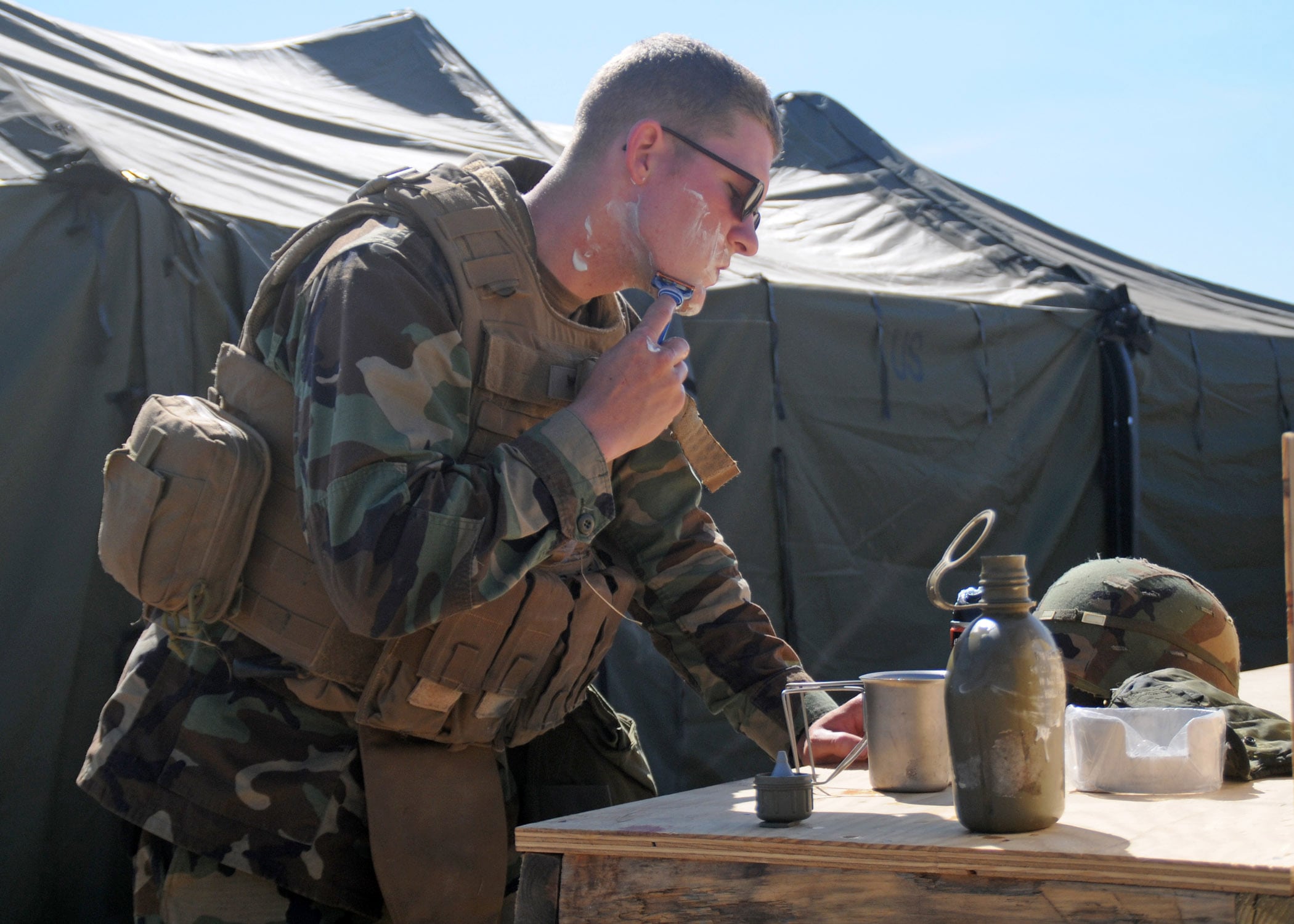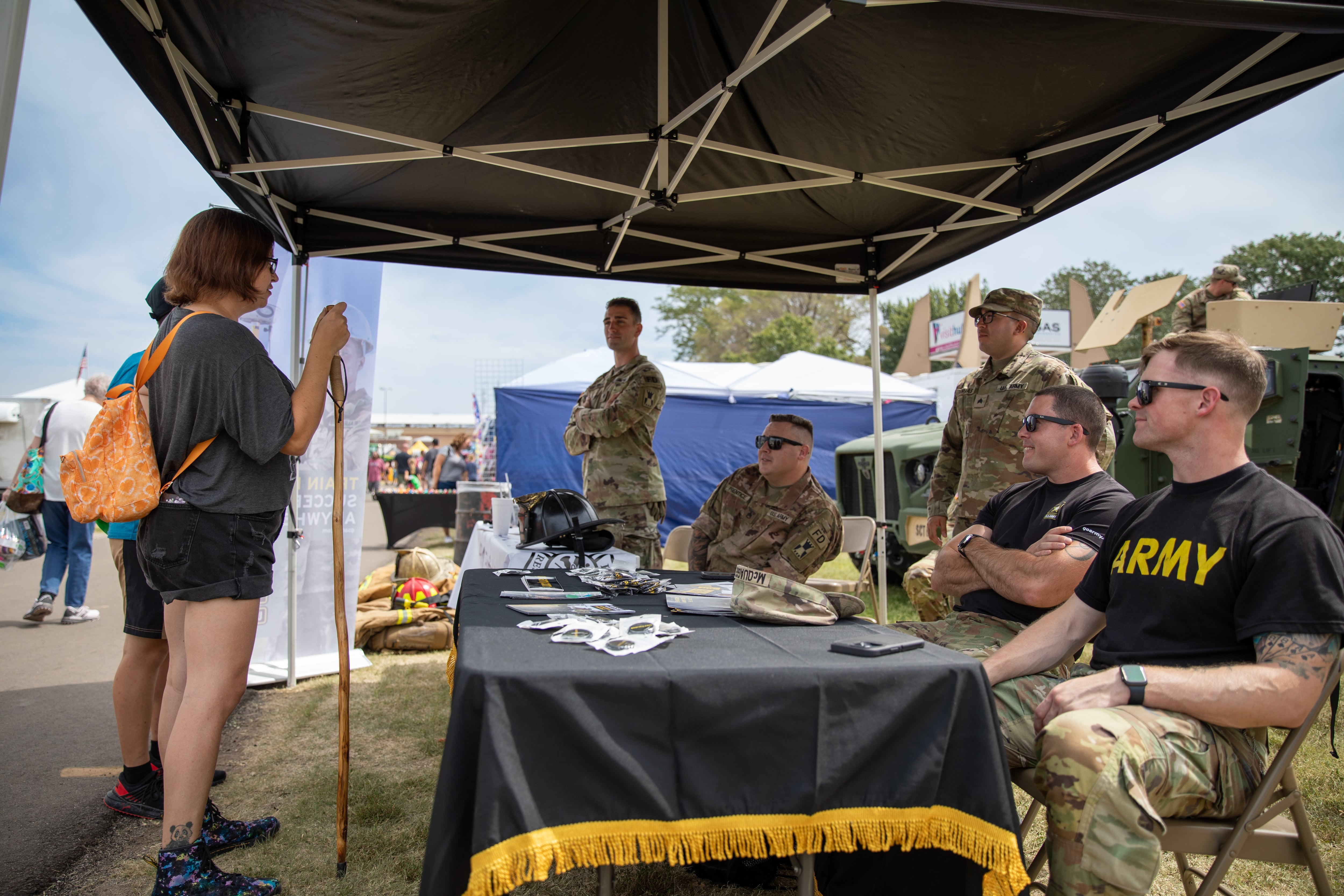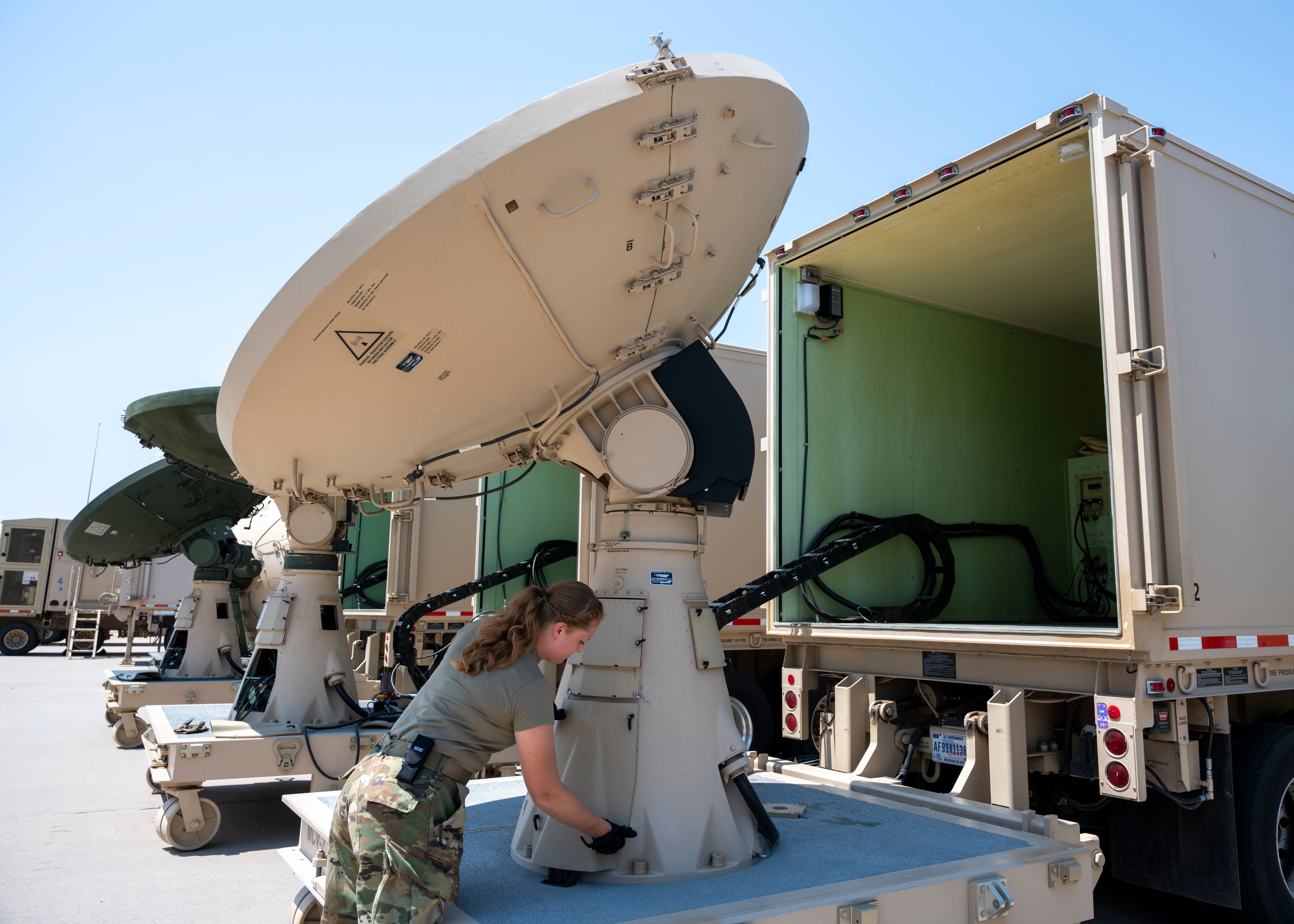Governors would maintain their authority over Air National Guard units with space missions under an amendment approved by the House Armed Service Committee Wednesday, complicating an Air Force proposal that seeks to transfer those units and several hundred airmen to the Space Force.
The committee unanimously adopted the amendment, introduced by Republican South Carolina Rep. Joe Wilson, during a markup of its version of the 2025 defense policy bill. If the provision becomes law, it could end a contentious period between Air Force Secretary Frank Kendall, who asked to circumvent governors during those transfers as part of draft legislation in mid-March, and the state governors and National Guard officials who oppose the idea.
RELATED

National Guard officials called the proposal an “existential threat,” arguing that it would have denied states the ability to tap into hundreds of citizen airmen in times of crisis, such as support during a national disaster, a core Guard mission.
“Having the Air Force come to the table and actually work with the governors instead of going around their backs, and give a little give-and-take — instead of all take — is exactly why the amendment was changed,” Brig. Gen. Michael Bruno, chairman of the space task force for the National Guard Association of the United States and director of the Joint Staff of the Colorado National Guard, told Air Force Times in an interview. “It can’t be all take.”
An Air Force spokesperson declined to comment Thursday, citing pending legislation.
RELATED

About 1,000 Air National Guardsmen serve in space-focused units across seven states, handling national missions like missile warning and space electronic warfare and state-level operations like wildfire tracking. They have remained in the Air National Guard even as active duty space units transferred from the old Air Force Space Command to the new Space Force.
Kendall, who in overseeing the Department of the Air Force also serves as the Space Force’s top civilian, sought a legal path for the Space Force to pursue its unusual idea for a part-time component. Rather than establish a Space Force Reserve and Space National Guard like the other services, the Space Force hopes to create a more flexible system that allows troops to switch between full-time and part-time work without formally transferring between active duty and the Guard or Reserve.
Bringing Air National Guardsmen in space units under the Space Force would be an early step toward building that nascent part-time component.
But under the provision HASC approved Wednesday, the Air Force secretary would be barred from deactivating Air National Guard units that transfer to the Space Force, and would be unable to assign them new missions. The secretary would also be required to find a new job for any guardsman who declines to transfer to the Space Force, and would be barred from moving units, equipment or billets to a new state. The language requires the defense secretary to report to Congress on the transition’s progress each year.
The amendment also caps the number of Guard members allowed to transfer to the Space Force at 580, a number nearly identical to an analysis of one of three scenarios laid out in a review the Department of the Air Force submitted to Congress in late April.
That review, required by the fiscal year 2024 defense policy bill and obtained by Air Force Times, assessed the feasibility of transferring space missions performed by the Air National Guard to the Space Force. It also considered two other actions: maintaining the current structure and establishing a separate Space National Guard. The latter is favored by the National Guard — and has been repeatedly pitched in congressional legislation since the Space Force was created in 2019.
The review evaluated each option on eight factors, ranging from readiness, unity of command and effort, feasibility, simplicity, cost, and impacts to recruiting and retention. Each could require new legislation or policy changes to accomplish.
While the review found each of the three options “feasible,” Kendall and Chief of Space Operations Gen. Chance Saltzman endorsed the transfer of nine space-focused units that were included in the study as the only “advisable” choice. That would include the transfer of 578 billets, 224 of which are full-time and 354 are part-time, in six states: Alaska, California, Colorado, Florida, Ohio and Hawaii. The transfer would not include more than 100 air guardsmen who work in support roles.
Although that transfer would be more complex than the other two options, taking as long as five years, the review said it would better align space missions, improve readiness, recruitment and retention and reduce bureaucratic overlap in some administrative roles. It would also keep in line with the Space Force Personnel Management Act, which gave those serving in the nation’s youngest military branch the ability to switch between full-time and part-time status.
Meanwhile, the report said maintaining the status quo would cause problems for readiness, as well as with unity of command and effort. The Air Force trains, deploys and presents forces to the combatant commands differently than the Space Force — disconnects that could “degrade readiness over time,” the report noted.
Command structure could also cause problems: The Guard units fall under the Air Force, and there could be fewer opportunities for career advancement for space-focused troops in the air-focused service, the report said.
Setting up a Space National Guard, which National Guard leadership prefers, addresses readiness and unity questions while also simplifying policies and procedures with the Air National Guard by moving “misaligned units,” according to the report. It would also require creation of command elements — cross-state deltas that would be associated with the Space Force’s current deltas that manage various types of space missions across multiple squadrons.
Standing up a Space National Guard, with a footprint of about 700 people, would run counter to the Space Force Personnel Management Act, the report said. Growth beyond its initial units could also become problematic, though the report acknowledges that’s “only speculation at this time.”
A troubled proposal
Kendall submitted the draft legislation to Congress in March, weeks before his department’s review was sent. That draft, referred to as “LP480,” sparked uproar from the National Guard Association, lawmakers and state adjutant generals, who said they felt sideswiped.
When asked about the proposal during a Senate Armed Services Committee hearing in April, Kendall downplayed concerns about the plan as “overblown,” but he offered few specifics other than he did not plan to move affected troops, who would first have to agree to the transfer.
“They would have stability and they will be able to continue to serve in the way, generally, that they currently would serve,” Kendall told senators April 16. “There should not be a lot of concern about dramatic changes, as far as we’re concerned.”
But those concerns persisted. Internal surveys cited by the NGAUS said the proposal could drive out between 70% to 90% of troops affected by Kendall’s proposal, and that recovery would take as long as nine years and cost $1 billion. While the Air Force has maintained that the moves would only affect about 580 airmen, NGAUS President Francis McGinn, a retired Army major general, said the “report is fraught with inconsistencies, inaccuracies [and] absent information that’s crucial.”
“How do you transfer 11 units or 578 billets with no people and not affect readiness?” McGinn asked. “That is just an illogical statement.”
With so many Guard members expressing an unwillingness to transfer, their departures would lead to a gap in military capabilities, McGinn argued.
“That’s not addressed in this report,” he said.
Governors from 53 states and territories in April signed a letter to Defense Secretary Lloyd Austin opposing the Air Force’s plan, and several lawmakers sent a similar letter earlier this month to the leaders of the House and Senate armed services committees.
A spokesperson for Colorado Gov. Jared Polis lauded the amendment on Wednesday. Polis, a Democrat whose state serves as one of the country’s military space hubs, has been a leading opponent of the Air Force’s proposal as vice chairman of the National Governors Association.
“This amendment ensures that the Air Force works with governors before changing force structure in their state, as has been the process for over 120 years,” Polis spokesperson Shelby Wieman told Air Force Times via email. “Gov. Polis has led the way on the issue … and is glad to see the federal government taking action and heeding the call of governors to follow federal law.”
Courtney Mabeus-Brown is the senior reporter at Air Force Times. She is an award-winning journalist who previously covered the military for Navy Times and The Virginian-Pilot in Norfolk, Va., where she first set foot on an aircraft carrier. Her work has also appeared in The New York Times, The Washington Post, Foreign Policy and more.
Zamone “Z” Perez is a reporter at Military Times. He previously worked at Foreign Policy and Ufahamu Africa. He is a graduate of Northwestern University, where he researched international ethics and atrocity prevention in his thesis. He can be found on Twitter @zamoneperez.




